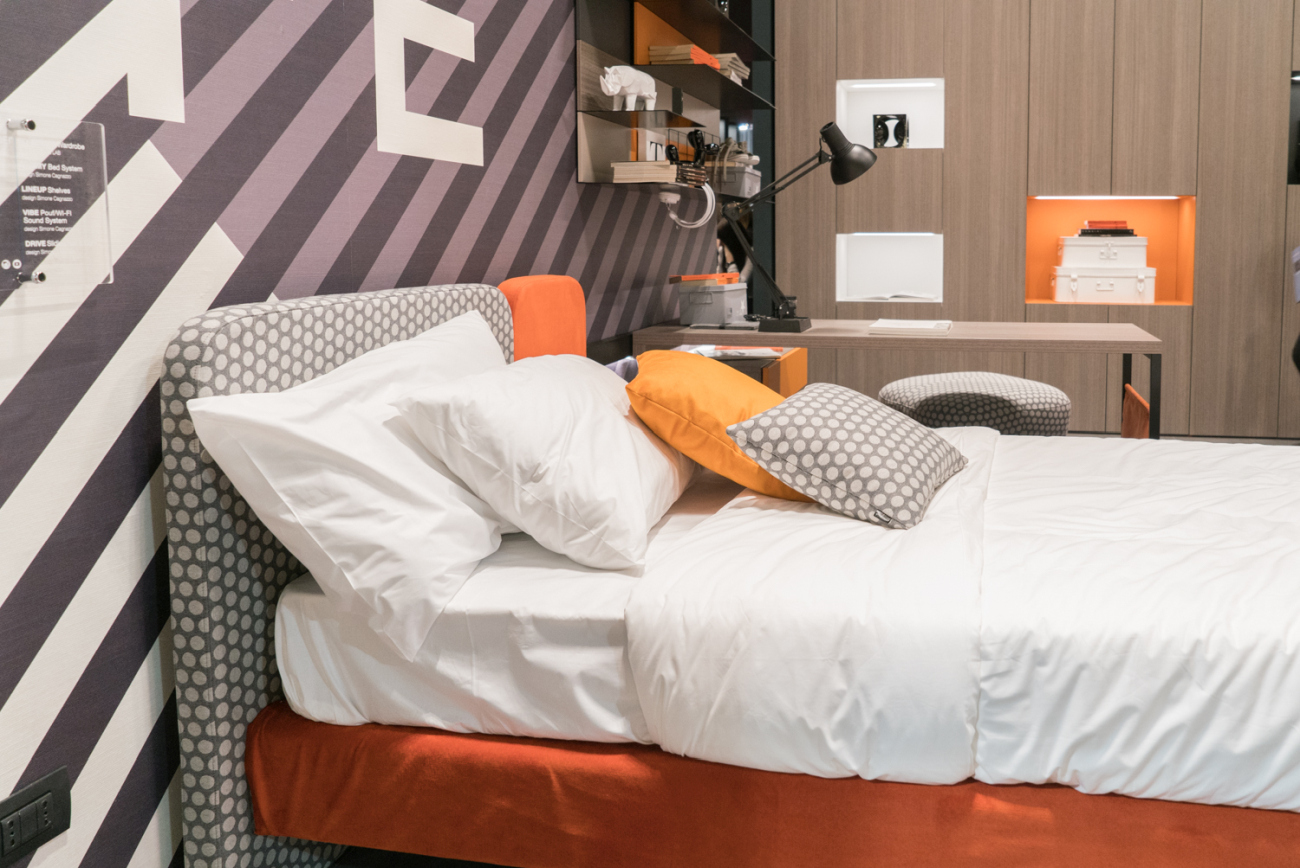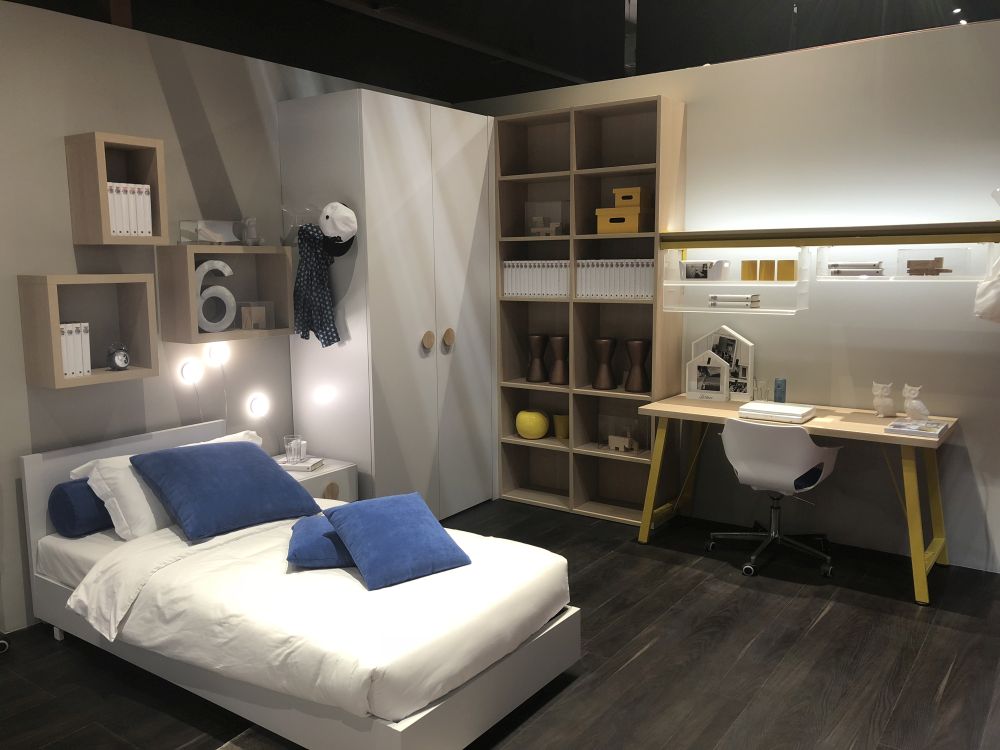Kid’s room ideas are distinct from nursery design, which often displays the preferences of the parent. These kid’s room ideas will give you the motivation you need to create a space that truly reflects your child’s personality, interests, and sense of style.
Whether they want vibrant color schemes or themed decor, your child’s room can spark their creativity and imagination. So, whether you are redoing a nursery or designing a chic room style for a teen, the process of designing the perfect kid’s room is full of possibilities and fun.
Kid’s Room Ideas

Kid’s room ideas include a variety of design options that cater to children’s individual needs and preferences. Here are some popular ways in which designers have styled children’s spaces to meet those requirements.
Embrace a Room Theme

Create a holistic room design using a theme that aligns with your child’s interests. Whether it is outer space, under the sea, or the natural world, this is an excellent way to stimulate your child’s imagination. This all-inclusive decorating style is also visually appealing and provides you with a focused idea for planning the color palette, furniture choices, and decor of the room.
Use a Colorful Wall Mural

Wall murals that are vibrant and colorful are a great addition to a child’s room for both young children and teenagers. Wall murals, whether painted or peel-and-stick, add a bright pop of personality to the room. You can find murals to depict any scene, from fairy tale landscapes to pop culture icons.
Create Interactive Learning Spaces

In a young child’s room, disguise learning environments as play areas. Make the room fun with educational toys, posters, chalkboard walls, books, and letter rugs, but make sure your child learns through play. Include comfortable places to sit and lie down so that your child can relax for hours while playing.
Add Multi-Functional Furniture

Optimize your child’s bedroom by using furniture that can serve multiple purposes. This could be a bed with hidden storage or a table that can function as both a desk and a craft table. Stack tall modular shelves to add vertical storage without taking up valuable floor space. These suggestions are especially useful in small spaces, but they also help large spaces function more efficiently.
Include DIY Art Displays

Including artwork created by your child in their room design is an excellent way to personalize the space and add visual interest. Install shelves to display their sculptures, paintings, models, and drawings. This strategy has the added benefit of increasing your child’s confidence in their abilities.
Make a Cozy Reading Nook

Set aside a portion of the room’s design for a cozy reading and rest area to foster a love of learning. Include a comfortable seat cushion, pillows, a blanket, bookshelves, and adequate lighting. This area will promote quiet time and the development of your child’s imagination.
Add Lights for the Darkness

Some children sleep well in complete darkness, while others require some light to calm their nighttime fears. Use soft lights like night lights or string lights to give their room a gentle glow.
Equip a Craft Corner

A dedicated arts and crafts space can help stimulate creative thoughts and processes. Provide a worktable, storage shelves, and craft materials so that your child’s imagination can guide their exploration and self-expression.
Nature-Inspired Kid’s Room

Both children and adults find the natural world stimulating. Bring some of this growth and energy inside by designing a room that resembles the outdoors. Include nature-inspired wall art and furniture, such as treehouse beds, as well as earthy and vibrant natural colors.
Bring in Flexible Seating

Children and teenagers are notoriously unplanned and thrive on last-minute arrangements, so it is critical that their room is ready for anything. Include adaptable seating options such as bean bags, poufs, hide-away mattresses, and small chairs to accommodate all of the guests who may be playing with your child on any given day.
Build in a Technology Corner

Technology is an unavoidable part of everyone’s lives, and it will become increasingly important to your child as he or she grows. It is vital to teach them the responsible use of technology. Make a technology corner with age-appropriate technology options that will change as your child grows.
Create Extra Bedding Options

Adding extra bedding to your child’s room gives you maximum flexibility. This will allow you to easily accommodate guests without having to dig through the closet for air mattresses and blankets every time they have a sleepover. A trundle or daybed are two options for extra bedding. You can also incorporate multi-functional furniture, such as futons, which can be used for both seating and sleeping. Bunk beds are another multi-sleeping option that is ideal for children who frequently have guests over.
Make Good Use of Corners

Making the best use of the available space is essential when designing an ideal kid’s room. This includes utilizing corners, which are frequently overlooked in traditional design. Convert corners into reading nooks, study areas, and play areas. Provide them with specialized furniture, such as corner desks, beds, or shelves, to help you make better use of this space.
Use the Space Under the Bed

The space under a child’s bed is a valuable resource that should not be wasted. When the bed is low, you can use the space for storage. To make use of this space, look for specialized storage containers that fit neatly under the bed. Make certain that these containers do not damage the floors as they slide in and out from under the bed. If your child has a lofted bed, you can use the space under the bed as a study area, bookshelves, a reading nook, or even a play area.
Utilize the Vertical Space in the Room

Making use of vertical space in a room can compensate for a small room’s lack of square footage. Install shelving units, ledges, and cubbies over the bed and over desks to maximize storage space. Hanging baskets, peg boards, and wall-mounted desks and tables are other storage options.
Add a Canopy

Hanging a canopy in your child’s room is a fun way to add to the magical atmosphere and create a cozy refuge. Canopies serve both functional and aesthetic purposes; they provide your child with a private space while also adding a whimsical touch to the room. A canopy can be hung in a variety of locations throughout the room, including over the bed, a reading nook, or a play area. Using different fabrics and headers, you can customize the canopy style to fit any room design. You can also add pockets to the fabric of the canopies. This is especially useful for play areas, where small toys and accessories can be stored.
Create Depth With Different Textures

Enhance your child’s room design with different textures that add comfort and visual interest. Explore various bedding options, including soft cotton sheets, fluffy blankets, and textured throws. Bring in cozy winter options such as faux fur, fleece, and velvet. Using plush rugs and carpets, add textures to the floor. Create a space for comfortable lounging by using cozy, textured upholstery on the seating. For storage, incorporate natural textures by using baskets and wooden decor.


